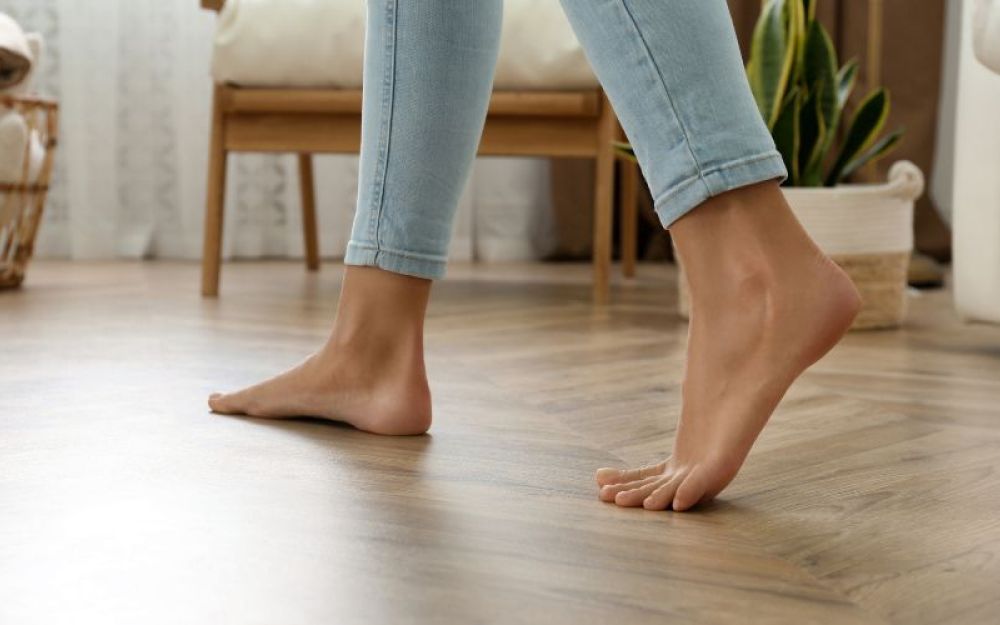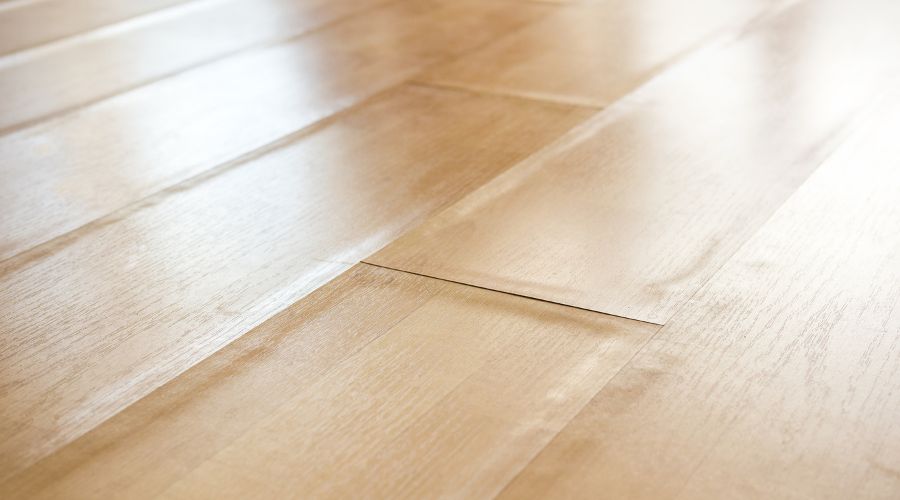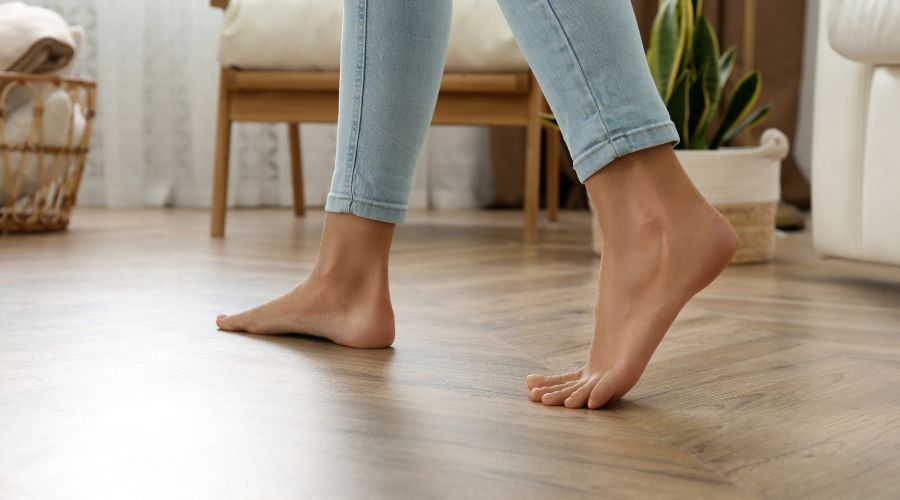
Does your floor feel unnaturally soft, bouncy, or spongy in certain spots? Soft spots on the floor indicate that there may be underlying damage to your home. These problems will likely only get worse and could be an indication of a much larger problem taking place. Working with crawl space experts can help you resolve your home’s issues before they become more serious. It’s important to seek help as soon as you’ve identified a problem.
If you see signs of a damaged floor, call the foundation repair experts at BAY Crawl Space & Foundation Repair to inspect your home. We can tell you the root cause of your problem and provide you with a free estimate for a fix. Our foundation repair and repair of floor soft spots can help you maintain your home.
What Are the Signs of a Damaged Floor?
It’s generally not hard to tell when a floor has been damaged, as floor soft spots are often accompanied by other problems that may indicate something is wrong with your home. Below are some of the signs of a damaged floor.
Squeaking Floorboards
Squeaking floorboards occur when the subfloor is pulled free from the floor joists. This can occur because the materials have become damaged over time.
Must
A musty smell is a sign that mold is growing somewhere in your house. The crawl space is one of the most common places for mold to originate.
Cracked or Warped Floors

Cracking and warping is an obvious sign of water damage. This is a problem that homeowners see on hardwood floors when a problem occurs in the subfloor. Hardwood floors experience a type of warping called “cupping,” which means that the edges of the floorboards will push up, leaving a depression in the center of the board.
Discoloration
Discoloration is another problem that can occur when there’s a moisture problem. Stains signal a leak or gathering moisture and can indicate mold. You can often see discoloration on the carpeting.
Uneven Floors
Uneven flooring, or flooring that has sunken in parts can occur when the subfloor becomes warped. You may see uneven floors when the material on top is made of laminate flooring or linoleum.
Five Causes of Soft Spots (And How to Fix Them)
If your home has a soft floor, there are many things that could have caused it. Knowing the potential causes can help you decide how to proceed with repairs for your home.
1. Water Damage
One of the most common causes of soft spots is water damage, which can occur for many reasons. One common cause of water damage is a burst pipe under the floorboards. You can even cause water damage by mopping your floors with a saturated mop. Condensation in the crawl space is another potential cause of your floor’s water damage. Either way, it’s important to get the floor repaired as soon as possible to address the issue before it becomes more serious. First, you must find the cause of the problem. Next, you must remediate it. You must replace the soft flooring as soon as possible. Call a professional to look at your subfloor to find the source of the damage.
2. Termites
Termites are wood-eating pests that can eat through hardwood flooring and through plywood subfloor. They may eat everything up to the paper-thin top layer of finish on your wood floors, leaving the floor more than just squishy but essentially gone. Termites that live on the floor can cause the most damage of all types of termites, leaving a home structurally unsound if the problem is left for long enough.
In addition to the holes you may find in the floor just beneath the wood finish or your flooring, you may also notice termites making tunnels in your floors or walls, leaving sandy mud tubes behind. If your home has termites, get help from a pest control professional. Then, repair the damage as soon as possible.
3. Subfloor Damage
If your foundation has settled since the house was built, your subfloor may have also settled, creating a dip between the boards on top and the subfloor boards beneath. This can cause low spots to form, which can also be perceived as soft spots. You’ll need a professional to repair the plywood floors. Depending on how much damage there is, you may also need a new floor to be installed once your flooring issues have been resolved. It’s important to remember that if your subfloor needs repair, it’s important to fix the source of the damage, as well.
If you don’t fix the problem that caused the subfloor to settle in the first place, then you’ll eventually need to repair the same problem all over again.
4. Installation Issues
If your flooring was installed with the wrong kind of underlayment, then this can create soft spots. This can also happen if your underlayment is not smooth beneath your floorboards or if the underlayment is double-layered beneath your flooring. The only way to make this repair is to reinstall the flooring with the proper underlayment. This should be done by a professional and done as soon as possible to reduce the possibility that the floorboards themselves will become damaged.
5. Lack of Expansion Gap
Your hardwood flooring should have been installed with an expansion gap around the perimeter of the room. Hardwood floor is hygroscopic, which means that it absorbs moisture from the nearby air. As it does, it can swell to a larger size. Although this size difference is imperceptible, it does affect your flooring. The expansion gap allows the hardwood floor boards to expand and contract over time. If the expansion gap is not present, then the floorboards may start cupping, which means that the edges of the boards press against one another and raise. These raised edges create soft spots. Once floorboards begin to cup, they will need to be repaired or replaced.
Should I Replace My Subfloor If It Has Soft Spots?
Soft spots can be indicative of foundation problems. You may be able to tell if you have foundation problems by taking into account the extent of the damage. If you have the ability, it helps to look at the subfloor beneath the flooring.
If you have a crawl space, you may need to go into the crawlspace and remove insulation from beneath the subfloor. Once you’ve had a view of the subfloor, you’ll be able to see what kind of damage is found beneath your home’s flooring, and depending on the extent of the damage, you may even be able to guess the probable cause of the issue.
When it’s time to fix your uneven, warped floors, start by taking advantage of BAY Crawl Space’s free crawl space and foundation inspection. During the inspection, we’ll be able to identify structural issues and problems with the vapor barrier. Once this is done, BAY Crawl Space will consult with you on the best option for repairing your floors. We help homeowners repair their subfloor, regardless of what types of flooring have been used in the home.
Preventing Future Soft Spots
There are many things you can do to prevent future soft spots.
Inspect for Foundation Problems
Start by watching your home for foundation problems. Catching foundation problems early can help prevent soft spots, as long as you get treatment for your soft spots early in the process. You can catch foundation problems through DIY inspections, or you can get help from a professional. If you’re looking for your own foundation problems, pay attention to these issues:
- Cracks in the drywall or plaster
- Counters or cabinets separating from the wall
- Gaps forming between exterior windows and walls
- Cracks in the walls, floor, or chimney
- Warping in the floors and ceilings
- Cracks in the foundation
As you walk around the house, look for some or many of these problems. If you determine that you do have a foundation problem, get help as soon as possible. Speak with a professional from BAY Crawl Space. A foundation stabilizer may be the solution to your problem.
Fix Water Damage
Water damage to your subfloor can cause soft spots over time. Repairing the damage quickly can help your home avoid soft spots and problems with sunken areas in the subfloor. Get help from the professionals at BAY Crawl Space. Watch for the signs of water damage so you can get your house help from a pro.
- Water leaks: If you’ve had a water leak, your subfloor is likely damaged and needs repair.
- Musty smells: You may smell a musty odor on the main floor of your house, or you may only smell something musty in certain parts of the home.
- Stains on the flooring material: Stains on the flooring material could indicate a leak affecting the flooring and subfloor underneath.
- Mold and mildew: If you see mold and mildew on your flooring, you may have water damage.
- Floorboard warping: Some floorboards may warp because of excess moisture in the air, but for floorboards that are not as sensitive to moisture in the air, warping is indicative of water damage beneath the floor.
Soft Spots Indicate Serious Damage to Your Home
While sometimes fixing a soft spot is as simple as replacing a few floor tiles, other times, it indicates an issue with your foundation. Either way, it’s important to hire professionals for fast, accurate repairs. BAY Crawl Space can help. We offer free inspections and consultations in homes with damaged subfloor, crawl space problems, water damage, and more. If your home has foundation trouble, we can fix that as well.
Do not hesitate to call our experts if you see an issue — and don’t wait! Waiting could lead to greater damage, especially if your home has water damage. Contact us at 757-460-0444 as soon as possible to get a quick diagnosis of the problem. We’ll be happy to help get your home into good condition, free from foundation trouble and other damage.



